
Partners Developing Underwater Single Photon Imaging System
FPGA for onboard processing targeted at imaging through scattering environments.Heriot-Watt University — are applying their knowledge to the design of the transceiver system and single-photon imaging techniques, building on their extensive research and utilizing their test facilities.University of Edinburgh — are bringing their experience in designing SPADs for 3D imaging and assisting Heriot-Watt University in evaluating these SPADs in an underwater setting, to help inform the design of the bespoke SPAD sensor and the imaging system.The project will deliver a subsea mapping system using
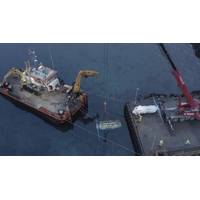
EnFAIT Horizon 2020: Tidal Turbine Costs Cut 40%
intervals to two and a half years; all of which are remarkable achievements. These are crucial steps for building investor confidence and making tidal energy bankable.” The seven EnFAIT partners from across Europe were Nova Innovation, ORE Catapult, IDETA, RSK, SKF, Wood and The University of Edinburgh. A Nova Innovation tidal turbine on land - the fourth to be deployed in the Shetland Tidal Array (credit: Nova Innovation)
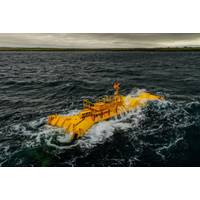
Mocean Energy Raises Funds for Blue Star Wave Energy Technology
Wave energy firm Mocean Energy has raised £2.2 million in new equity alongside a £500,000 grant to drive the commercialization of its wave energy technologies.The equity funds come from existing investors, including Equity Gap, Scottish Enterprise and Old College Capital, the University of Edinburgh’s venture investment fund, alongside new shareholders Norwegian impact investors Katapult Ocean and MOL PLUS, the corporate venture capital arm of listed Japanese shipping conglomerate MOL.In addition, Mocean has secured a £499,500 Low Carbon Manufacturing Challenge Fund grant
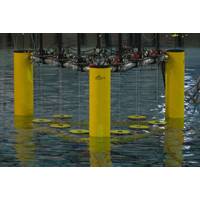
Floating Platforms of the Future: WES Explores Shared Infrastructure for Wave Energy, Offshore Wind
Wave Energy Scotland (WES), a subsidiary of Highlands and Islands Enterprise (HIE), is running tests at the University of Edinburgh’s FloWave facility, to determine the potential for floating platforms that can be used by both offshore wind and wave energy devices.The move has been prompted by a report by Offshore Wind Consultants (OWC) exploring the synergies between the two areas of renewable energy and the potential benefits of sharing infrastructure, services, and supply chains.According to HIE, conditions in the testing facility have been created to match one of the west of Scotland offshore
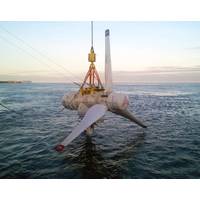
ORE Catapult: Tidal Stream Energy Costs Could Plummet If Current Opportunity is Realized
;Moving to piled foundations and anchors for fixed bottom and floating devices, respectively, would also deliver cost savings. Longer term, the report estimates that a LCOE of £60/MWh could be reached by 2042 and £50/MWh by 2047. Economic benefits, in recent studies from the University of Edinburgh and University of Manchester, were also highlighted. TSE projects generate over 80% of materials from the local supply chain, create up to 45 jobs per MW deployed - exceeding the wind and solar industries, and could contribute up to £17 billion to the UK economy by 2050,"
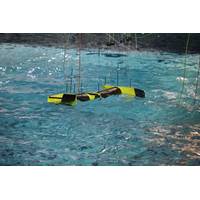
Mocean Energy Starts Tank Testing Models for 250kW Wave Energy Machine
of the €20 million R&D scheme, which will ultimately see three prototype technologies tested at the European Marine Energy Centre (EMEC) in Orkney and the Biscay Marine Energy Platform (BiMEP) in Spain.The eight-day development program is taking place at the FloWave test facility at the University of Edinburgh, which is able to generate representative sea states for both sites.Blue Horizon is a mid-scale wave energy machine designed to deliver grid power to remote and island communities.“The purpose of our testing is to validate our numerical models and the hydrodynamic performance of our
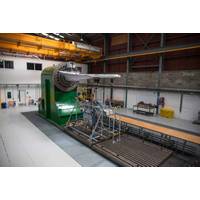
Rapid Testing Facility for Tidal Turbine Blades Opened in Scotland
FastBlade, dubbed the world’s first rapid testing facility for tidal turbine blades, was officially opened in Fife, Scotland, on Friday as part of a partnership between the University of Edinburgh and Babcock.The facility will stress test blades made from composite materials – which must withstand harsh ocean conditions for 20 years – more quickly and will use significantly less energy than any other facility of its kind, according to Babcock.Based at Babcock’s Rosyth site in Fife, the £4.6 million (USD 5,6 million) facility was officially opened by UK Government
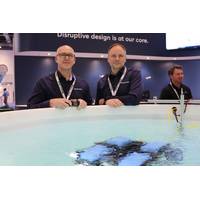
Oceanology ’22 Day 2: New Demands Drive Ocean Innovation
at, including operations via uncrewed surface vessels (USVs).Norway’s Kystdesign is designing a new work all electric work class ROV that will be USV-ready, like SMD’s Atom electric ROV, which got its first customer, Rovco, announced today via a LOI. L3Harris has been working with the University of Exeter through the ARISE project to optimise ROV operations from USVs while Heriot Watt University in Edinburgh has been focusing on building autonomy into ROVs, to make over the horizon operations easier, another conference session heard.Meanwhile, new breeds of vehicles are entering the market
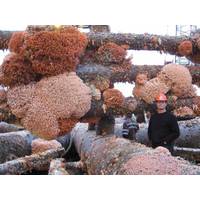
Decommissioning: Corals on Oil Platforms Could Kick-start the Deep-sea Ecosystem
coral Lophelia pertusa was first reported growing on the legs of oil platforms in the northern North Sea. As these platforms reach the end of their operational lives, many are being decommissioned and brought ashore. What happens to the coral, asks Murray Roberts, Changing Oceans Research Group, University of Edinburgh.Huge efforts have gone into safely recycling the steel and other materials from the platforms, but no plans have been developed to use the coral that have grown on them. They don’t survive in air and quickly die before being removed from the platforms during decommissioning. But rather



 February 2024
February 2024





